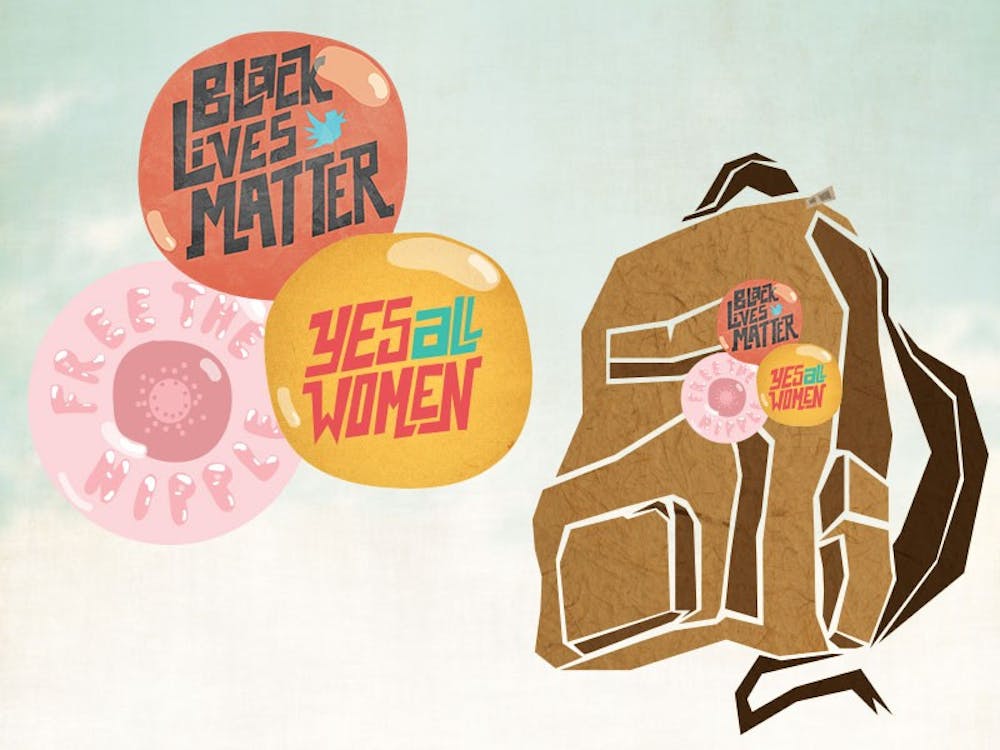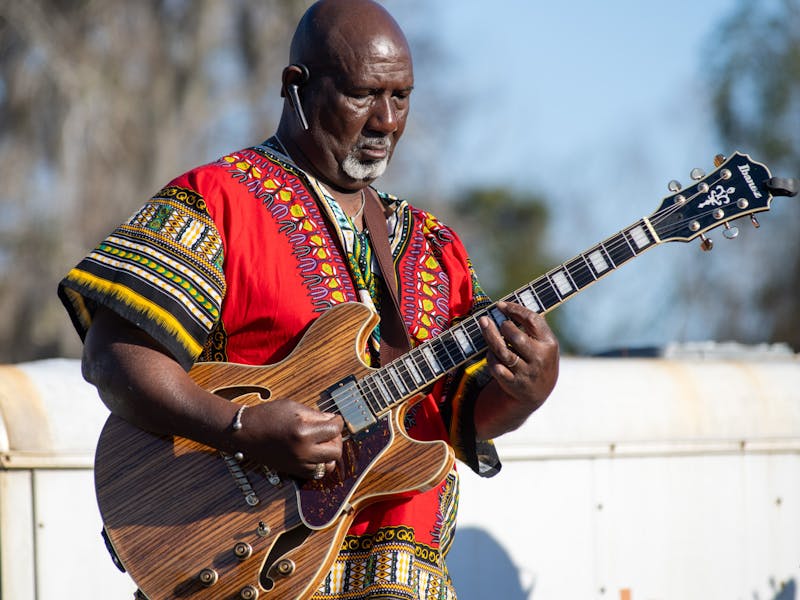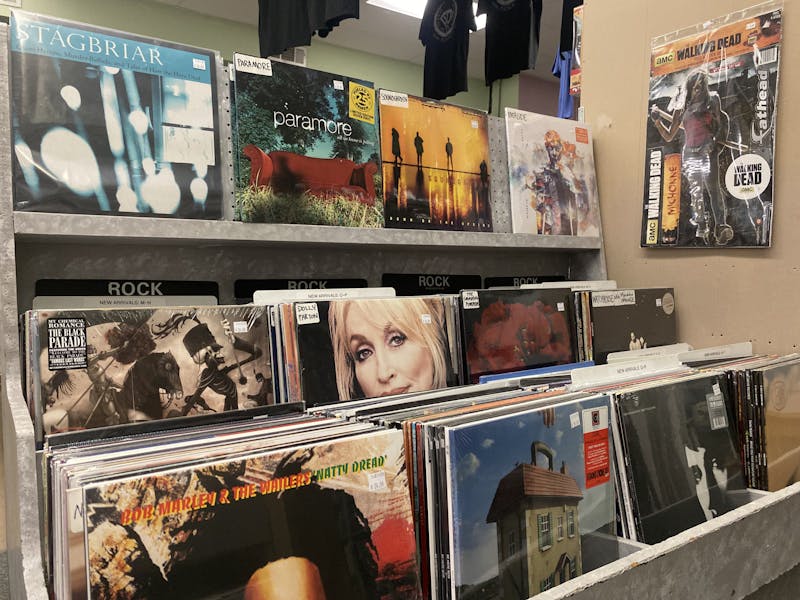On Monday, Nov. 16 at 10:30 a.m., students on USC’s campus promptly left class and traveled to the Longstreet Theatre.
Clad in black, they proceeded to march down the Horseshoe to meet with the administrators and demanded their needs be met. These needs were issues spurred from the lack of representation at this year’s Homecoming pep rally.
Unrest among college campuses has been loud and clear, especially online. USC is one of the 76 colleges and universities on thedemands.org, a website that links to the demands of their respective student bodies, but the 2020 Vision movement began to gain momentum on Twitter.
USC’s coalition of concerned students, 2020 Vision, was formed from different organizations and students. The group’s demands sprung from concerns about the ineffectiveness of diversity outreach and inclusionon our campus and the policies that concern that, such as the Carolinian Creed, a document which every USC student is required to sign.
“I think people are just tired of being fed up, and once they see other people speaking out, they’re more likely to do the same,” Clarie Randall, third-year biology and psychology student and co-president of USC’s Feminist Collective, said.
Randall said she was scared when the Google document of demands was first leaked, but administrators were there to greet them during the walkout. The 2020 Vision is unique because social media wasn’t initially used as a tool, but it ended up working in the group’s favor. Generation Y makes up most of USC’s student body and is a product of the Internet age. Platforms such as Twitter and Facebook are powerful and pervasive. Social media gives us a voice.
Social media can be an intrusive and complicated public forum — it’s often the first thing we see when we wake up. Serious social issues, such as gender-neutral housing and racial diversity, are a constant topic of conversation across these platforms, which make these issues hard to ignore.
“People were talking about it. They were, frankly, b----ing about it,” Randall said. “When people b---- about stuff on the Internet, other people will listen.”
Within the last five years, we’ve seen various social media platforms used as orchestrated political vehicles. From the Arab Spring to #YesAllWomen, #BlackLivesMatter to #FreeTheNipple, social media is the unsung hero of the public forum.
“The same sort of attitudes about things like race are still here today. That history of race, colonialism, the negation of civil rights are still with us today but it is transformed. Before it was through laws, but now it’s more covert through attitudes,” Martin Aveldanes, second-year sociology and mass communications student and a close participant of the 2020 movement, said.
The 2020 Vision movement’s walkout mushroomed into an impactful conversation. Not only did students, faculty and news organizations take to social media to continue the conversation, administration is also working closely with the student body to create change.
“So, the night before, everyone knew, but I think that actually helped us. I think we got a bigger turnout [because of] that,” Aveldanes said. “I’ve never seen anything on campus like it.”
Social media isn’t just the gambit of college campus activism. It’s being used globally. For instance, in Tunisia, a fruit vendor, furious with bureaucracy, set himself on fire. Someone witnessed it and took a phone video that went viral. This video had the power to take down president Zine el Abidine Ben Ali, who had been in power for more than 20 years.
“Social media didn’t lead to permanent change, although it is a stark political tool,” Randy Covington, a USC professor of journalism and mass communications, said. “In a different era, he would have died and that would’ve been it. But someone had a cellphone and they took a video and they posted it and it got shared.” This was one of the first events that led to the Arab Spring.
United by social media movements, hashtags galvanize action. They're not only a vessel for change, but rapid publicity. Everything goes quicker. When things catch on, they explode — movements that would’ve taken decades before are catching on much quicker.
“But if you’re upset about fill-in-the-blank and you’re posting your opinions about whether that police officer should be charged with murder, it’s not that it’s social media,” Covington said. “It’s posting it on a subject people care about, hey have an opinion about and they want to share something that is significant.”
Covington attributes the rapid acceptance of gay marriage as being driven by Generation Y, but also the rapid sharing of ideas and concepts that before would have taken much more time to seep into the culture.
While it appears that some movements come out of thin air, socialmedia is society’s informal megaphone, amplifying our beliefs as well as our outrage.
Mathieu Deflem, a sociology professor at USC who specializes in law and pop culture, said the formula for an organization or individual to spark a revolution is two parts serious conviction on an issue and one part serious levels of organization. The ratio is interchangeable, but the ingredients are crucial.
“The people that take up certain social, political issues in, let's say, ‘the old days,’ had to have the right idea or particular strength of conviction,” Deflem said. “For instance, Martin Luther King, where his oratory skills were very well known, the civil rights movement had a special connection to churches.”
Twitter is a facilitator of revolution, just as Martin Luther King Jr. was a mouthpiece for the civil rights movement. “It’s great to have other people start speaking up, but we’ve been having these conversations on campus with different people for a long time, and cultural change needs to happen, but we can’t just expect people to do that with one protest,” Randall said.
To many, social media by itself is arbitrary, but with the right people behind it, it can make significant change. It can topple dictators. It can change policies that people thought could never be changed. The demands made by 2020 Vision can be met — the demands of a student body can be met.
It’s Hip Hop Wednesday, and Yik Yak is littered with atrocious, racist comments. Through the mouthpiece of Twitter, students expose the hate, share ideas to end it and converse seemingly endlessly. It’s the same strength and conviction that students used when they did sit-ins in protest of an idea, and it’s the same way that early civil rights activists were successful in spreading their message through television broadcasts of protests. When people see injustice firsthand, they’re more likely to fight back.
While many issues can seem like the flavor du jour, an issue has to have a particular gravity to stick — the issue must be serious and demanding. Anybody with a cellphone and a Facebook account is a publisher, a voice or a revolutionary. Many of the demands of the 2020 Vision movement visionaries seem to have fizzled out, but the conversation is constant. There isn’t a need for talking heads because of social media. USC students are making progress.
“It just kind of shows that, in this movement, we stand in solidarity, but we also have our own issues here as well,” Randall said. “There are problems that need to be addressed, because if we don’t, nobody is going to do that.”



